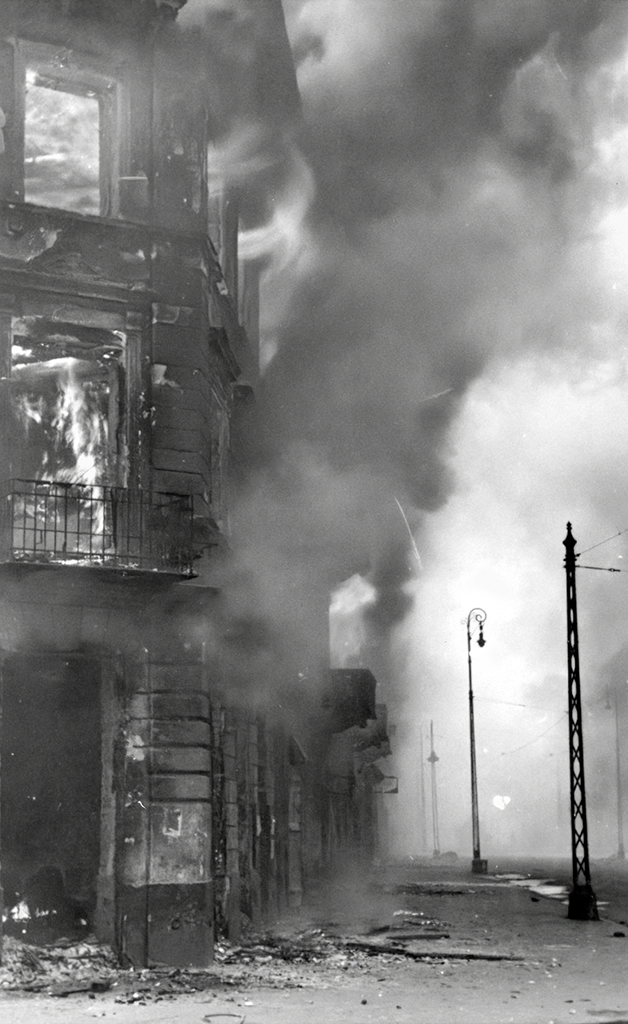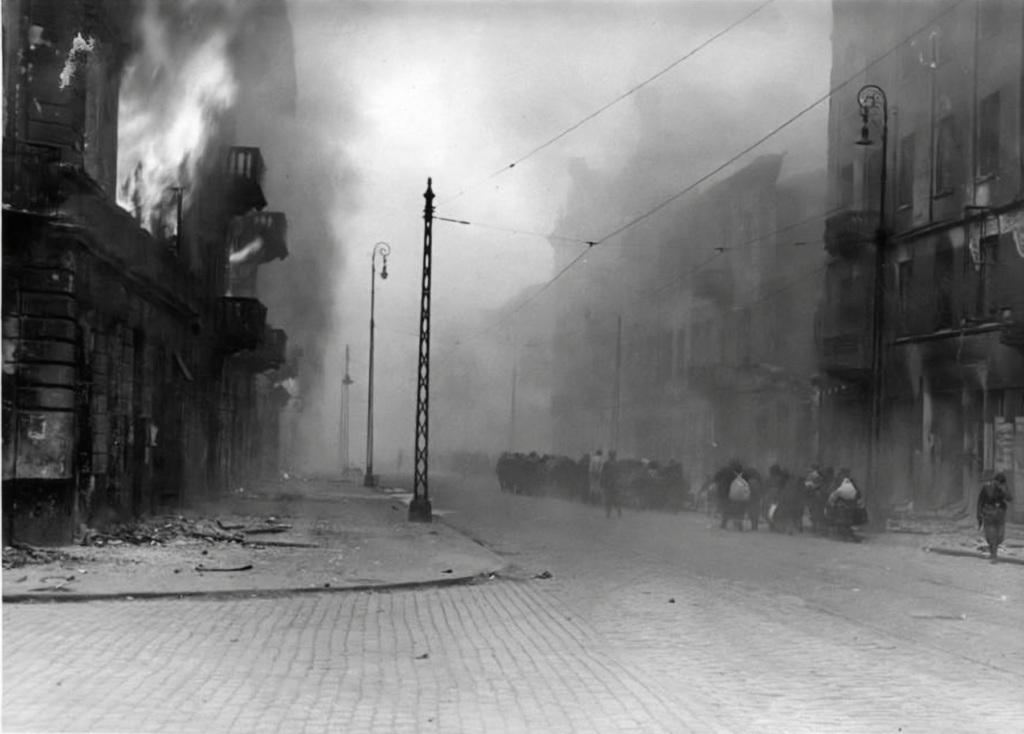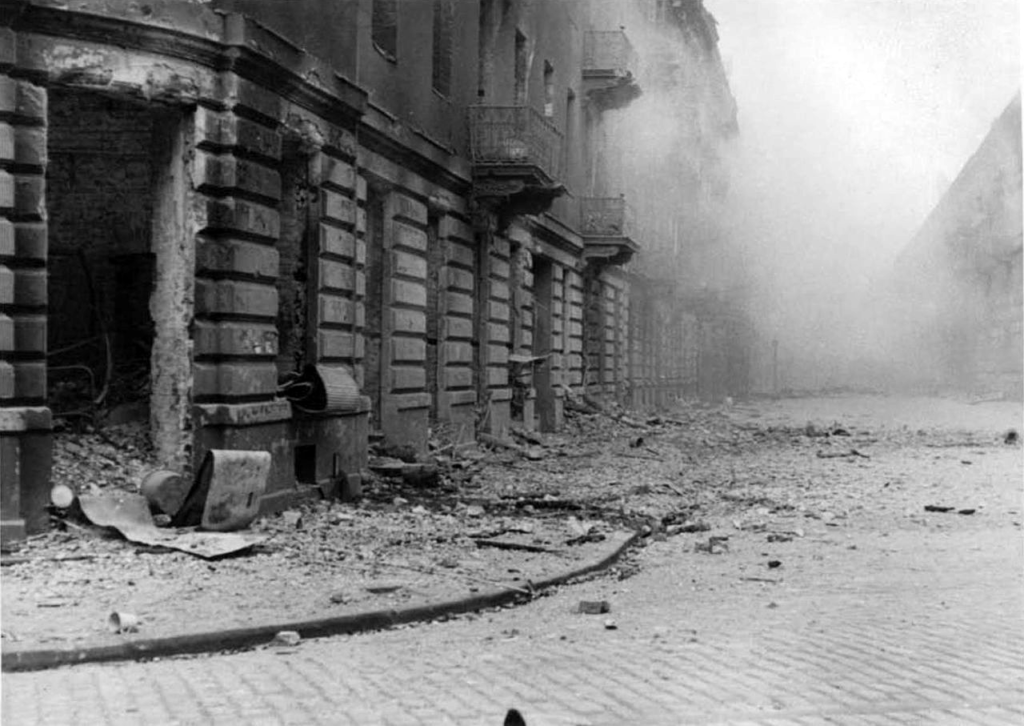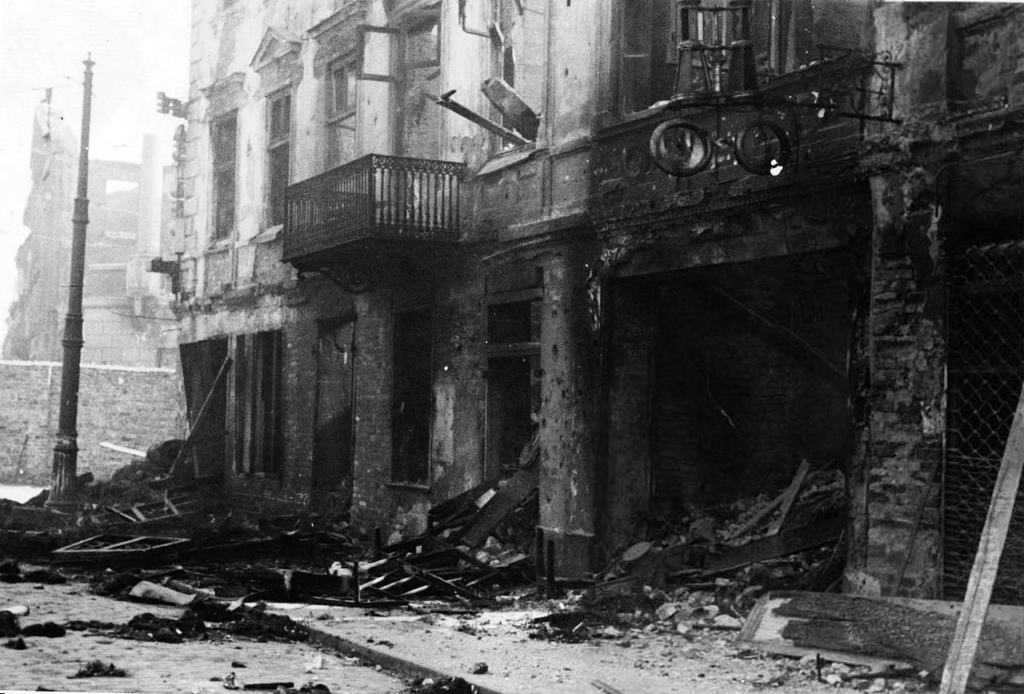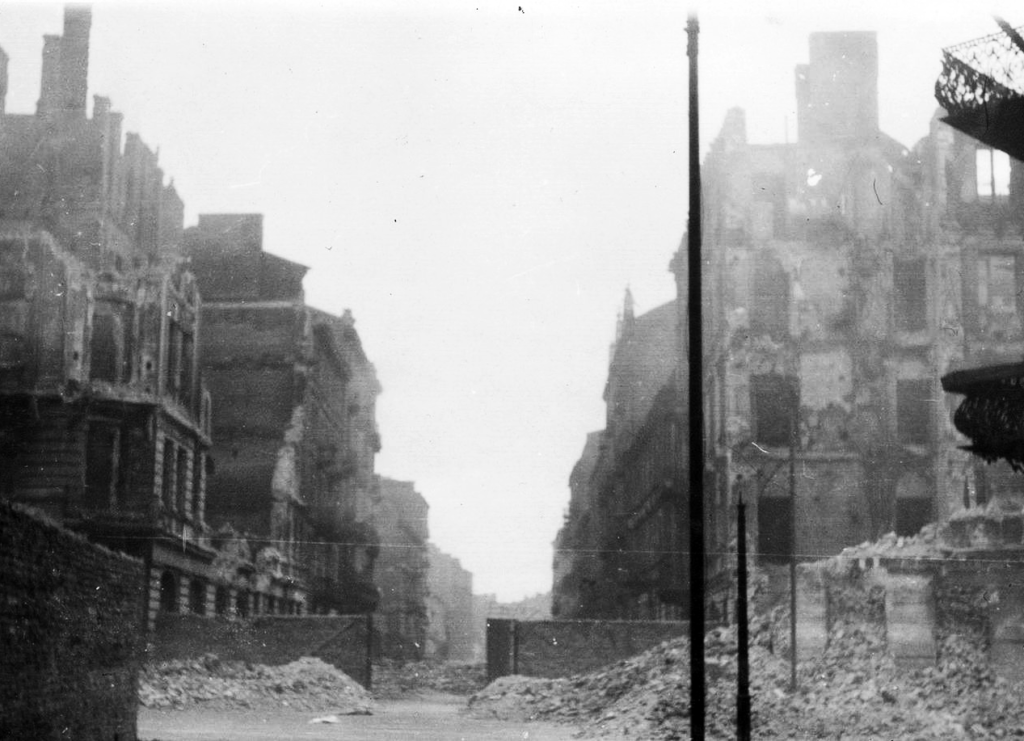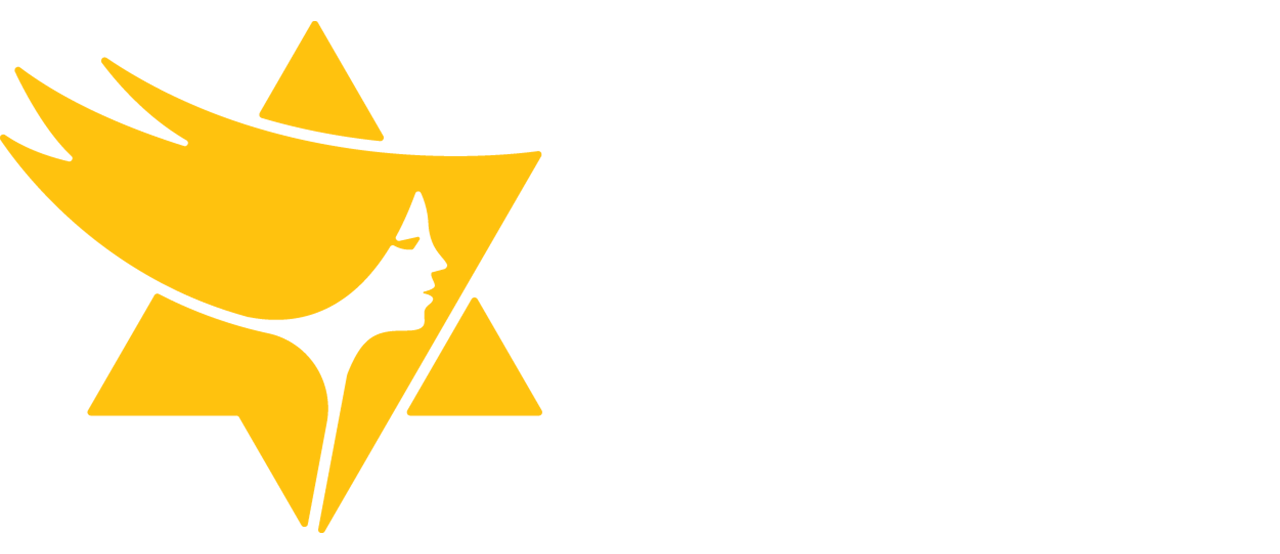80th anniversary of the Warsaw Ghetto Uprising
In the historiography of World War II, much space is devoted to the armed fight and different manifestations of resistance against the occupiers. At the same time, the scale of the resistance, the diversity and the heroism of the undertaken actions are emphasised. What contradicts that description to some extent, is paying attention to the alleged passivity of the Jewish population and their lack of will to fight. A careful study of the occupation and post-war memoirs allows to look at that part of the occupation from a slightly different perspective and to understand, in a better way, the mechanisms that guided the behaviour of Jews confined to ghettos and camps. Having analysed those reports, one can realise why and what decisions they made and also that their resistance was not only a fight with weapon in their hands.
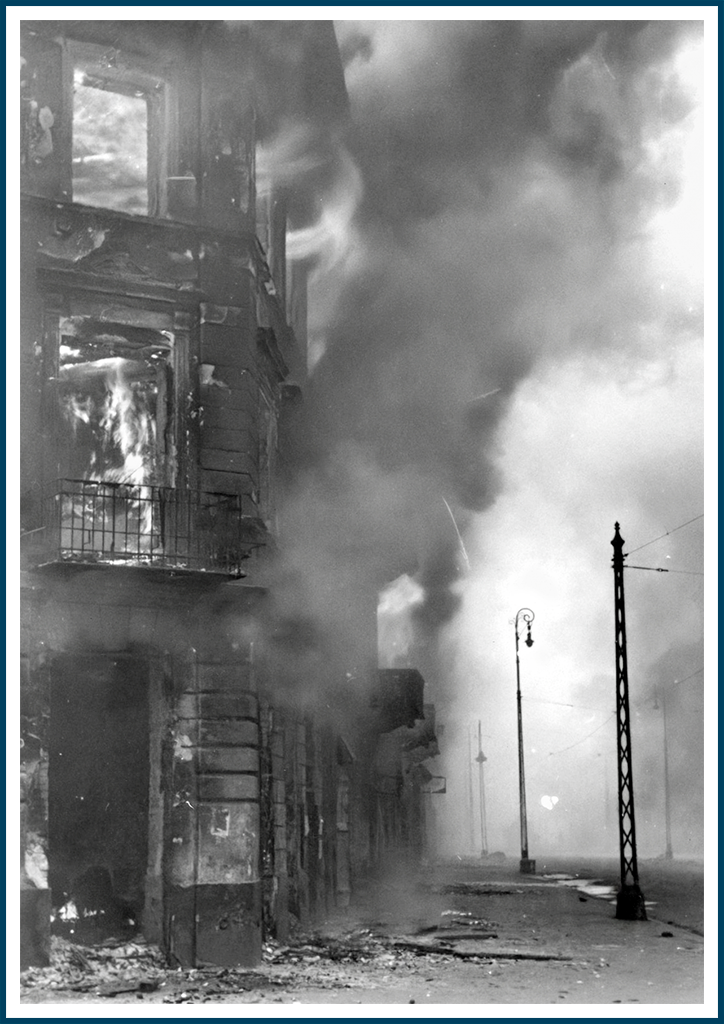
First forms of resistance
Already in the first months of the war, Jews used various forms of resistance and joined underground activities. However, it was not an armed fight but rather the so-called grassroots work. They opposed the successive discriminatory ordinances introduced by the Germans and tried to function against them. At the beginning of the occupation, due to the legislation and the living conditions in the ghettos, the focus was mainly on organising social and health assistance. Secret education was also important. Jewish political parties resumed their activities as part of the underground movement. Like the leaders of social organisations, they provided assistance to the needy and developed a network of civil resistance. House committees were also organised. Thanks to those initiatives, it was possible to hide people in danger of, for example, arrest or forced resettlement, as well as to distribute underground press and leaflets and pass on important information. Various manifestations of cultural and religious life were also a form of resistance. Artists continued to paint pictures, literary works were produced and various public performances were organized. There were theaters and cabarets in the Warsaw Ghetto. Concerts were organized in many larger and smaller ghettos, often with a charitable purpose in mind. Despite the prohibition, collective prayers and concerts of religious songs took place in the ghettos during the major Jewish holidays. Another form of resistance was a scientific and historiographical activity. Despite the real difficulties of the period of the occupation, some scientists continued their research and even started new projects. As far as such actions are concerned, special attention should be paid to the activities undertaken by the historian Emanuel Ringelblum. On his initiative, a secret archive was established in the Warsaw Ghetto.
It operated under the code name Oneg Shabbat, or “the joy of Saturday”, and the purpose of this project was to document the daily life of the ghetto and the people imprisoned there.
The indicated forms of everyday Jewish resistance against the Germans changed when the extermination of that community began. The actions taken by the Germans under Operation Reinhardt, the deportations to death camps – propagandistically called deportations to work “to the east” – of entire families, including women, children and the elderly, accelerated the formation of armed resistance groups.
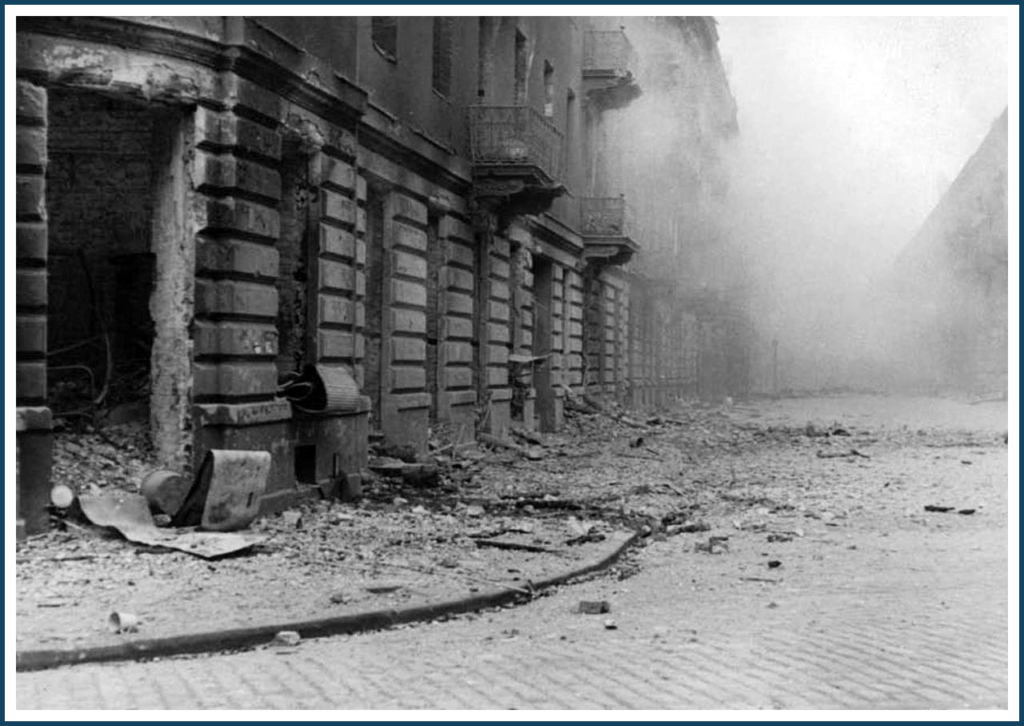
The truth about Treblinka
After two years of functioning of the Warsaw Ghetto, in the period from 22 July to 21 September 1942, the Germans carried out the so-called Great Action. Approximately 260,000 Warsaw Jews were deported from the ghetto to the extermination camp in Treblinka, where they were murdered. During that time, on 28 July 1942, the foundations of the Jewish Combat Organisation (ŻOB) were established. By December 1942, it had its final shape. The organisation was created by young people who were involved in three other organisations: Ha-Shomer Ha-Cair, Dror and Agudat Ha-Noar Ha-Iwri “Akiba”. Their intention was to fight the occupier, although they were aware that they had no chance to defeat the German SS units. The founding members of the Jewish Combat Organisation were, among others, Mordechaj Anielewicz, Icchak Cukierman, Cywia Lubetkin, Mordechaj Tenenbaum, Arje Wilner and Józef Kapłan. Both men and women were involved in the underground activities. There was also another armed organisation in the ghetto, which got significantly involved in the April uprising – the Jewish Military Union (ŻZW). It was formed by people associated with Betar circles and Zionist revisionists. The head of the union was Paweł Frenkel.
On 18 January 1943, the first armed uprising against the occupier took place in the Warsaw Ghetto. The announcement of another deportation action from the ghetto to the extermination camp at Treblinka led to the fight. Having deported approximately 5 thousand people, the Germans stopped the deportations. The events of January 1943 made it clear to the Jewish fighters that the Germans were going to liquidate the ghetto and start the deportation action again sooner or later. Therefore, over the following weeks, the Jews were getting ready for an armed fight. Maintaining the principles of conspiracy, they trained young people, organised weapon and prepared places where they could hide away, the so-called bunkers. Civilians were also asked to get involved in in the construction of shelters and underground tunnels.
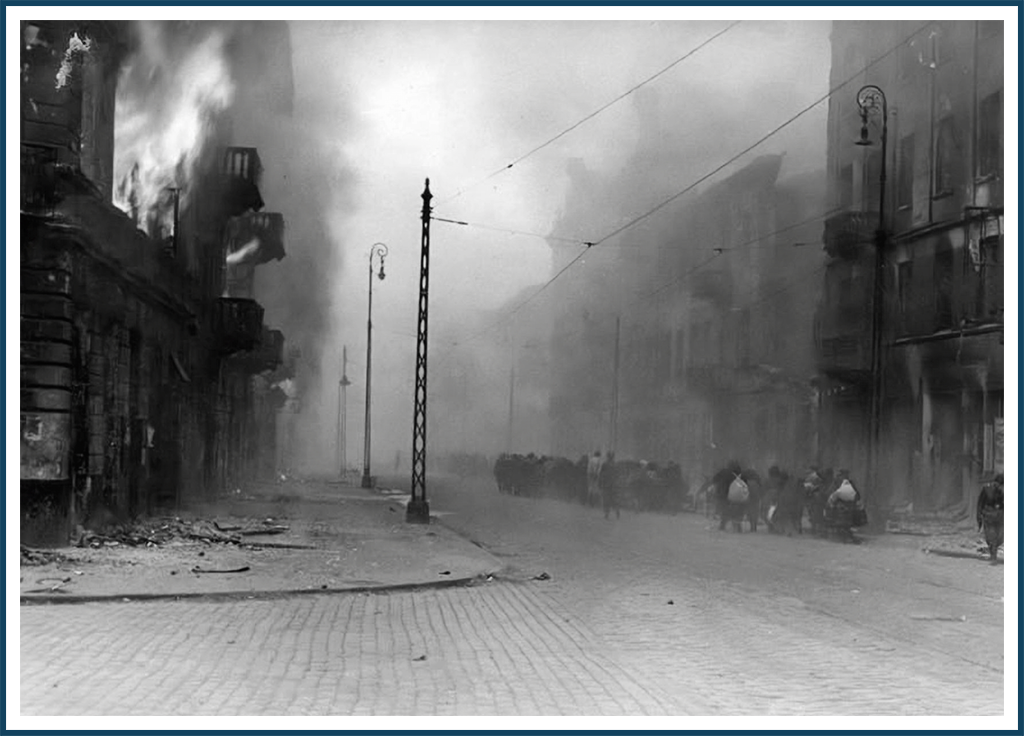
The ghetto is fighting
At dawn on 19 April 1943, the Germans initiated the action. The German military (Wehrmacht), SS and police units, as well as auxiliary Ukrainian and Latvian formations, were led by Oberführer Ferdinand von Sammern-Frankenegg, the SS and police commander for the Warsaw district. Armed with rifles, automatic pistols, light and heavy machine guns, flame throwers and even armoured cars and tanks, they started to liquidate the ghetto. They entered the area of the so-called Jewish district: from the south, along Nalewki Street, and from the intersection of Gęsia Street (today Anielewicza Street) and Zamenhofa Street. They gathered considerable forces and weapon, although they assumed that the action would last no longer than three days. It was to be a present for the Führer on his birthday. However, they encountered strong resistance from Jewish fighters. The largest armed revolt of the Jewish population during the Second World War and the greatest urban uprising at that time began.
The surprise attack forced the Germans to leave the ghetto. Later on that day, in the afternoon, they returned led by SS-Gruppenführer Jürgen Stroop. He managed the ghetto pacification operation until its very end. The fights in the ghetto went on for several weeks. The fighters attacked the Germans from hiding, using, e.g., grenades and throwing Molotov cocktails at them
The largest battle of the uprising, the Battle of Muranów Square, lasted from 19 to 22 April 1943. The area around that square, which no longer exists, was defeated mainly by members of the Jewish Military Union. The fighters shot at the German troops using machine guns. Knowing the battlefield well, and frequently changing their shooting positions, they managed to escape the Germans who attacked them.
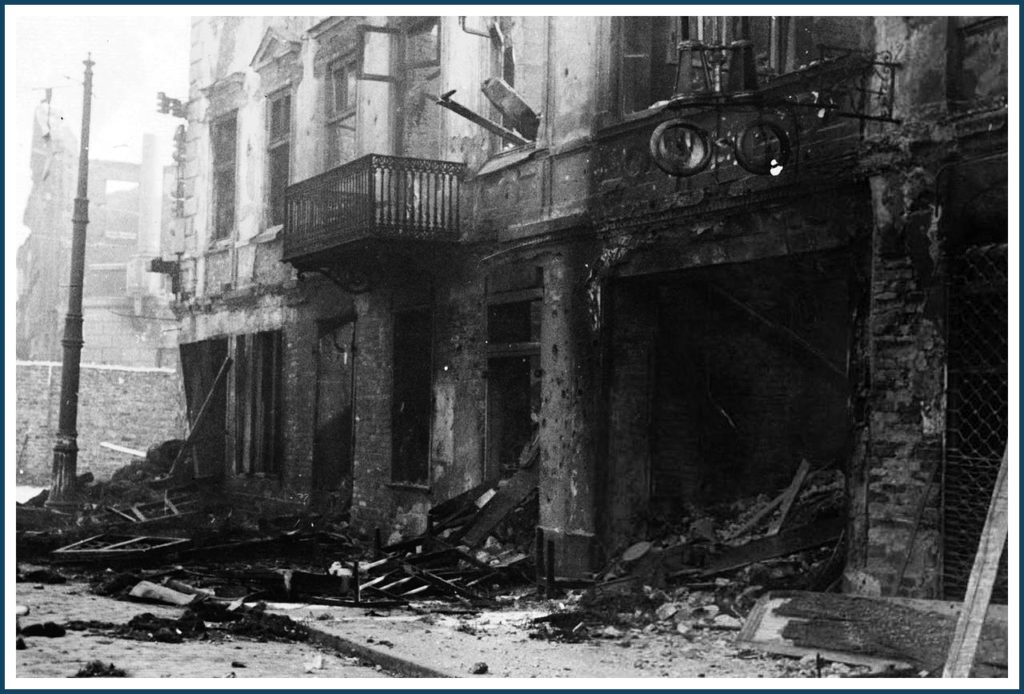
A symbol of those events is the image of two flags that appears in the reports: a Polish red-and-white flag and a Jewish blue-and-white one, flying on the roof of a tenement house at 7/9 Muranowska Street, on the corner of Muranów Square. Members of the Jewish Combat Organisation and the Jewish Military Union also fought fiercely in the area of the shops. The fights in the so-called brush factory located at Świętojerska, Wałowa, Franciszkańska and Bonifraterska streets went down in the history. The Jewish Combat Organisation was led by Marek Edelman, and the Jewish Military Union – by Chaim Łopata. Under the pressure of a heavy attack with the use of Molotov cocktails and grenades, the Germans even proposed a ceasefire and safe transfer of the workers of the shop to the labour camps in Poniatowa and Trawniki. However, the proposal was rejected. Members of the Jewish Combat Organisation also fought in the central ghetto at Miła Street, in Toebbens and Schultz’s shops near Leszno Street (present Solidarności Street).
In search of outbreaks of resistance and people hiding away, the Germans systematically combed street by street, tenement by tenement. They left the corpses of civilians and the ashes of burned buildings behind them. Those jumping from balconies and windows of burning buildings were called “paratroopers” by the Germans. In the following days, fights were taking place over buildings and even over individual bunkers. On 8 May, the Germans discovered a shelter in which the headquarters of the Jewish Combat Organisation were located, at 18 Miła Street, where Mordechaj Anielewicz also stayed. He was not taken alive; some of his comrades were killed with the use of gas released by the Germans into the bunker, few managed to escape.
According to the Germans the uprising ended on 16 May 1943; on that day, Stroop managed, after several unsuccessful attempts, to blow up the Great Synagogue in Tłomackie Street (this is where the Blue Skyscraper is located today); however, armed fights continued over the following days. Most of the ghetto buildings were blown up or burnt down, and the whole area was razed to the ground. According to Jürgen Stroop’s report, under the meaningful title “Es gibt keinen jüdischen Wohnbezirk in Warschau mehr!” (The Jewish residential district in Warsaw no longer exists!), there were approximately 56 thousand Jews in the Warsaw Ghetto during the uprising. Nearly 7 thousand of them were murdered by the Germans on the spot, and almost 7,000 were taken to the Treblinka extermination camp. Approximately 6,000 Jews died during the fights. Almost 36,000 of those who remained were deported to labour and concentration camps located on the territory of the General Government.
The year 2023 marks the 80th anniversary of the Warsaw Ghetto Uprising. The Uprising, commemorated in several places in Warsaw today, is one of the most symbolic and described events in the history of the Holocaust. This first urban uprising against the Germans and the largest military uprising of the Jewish population during World War II deserves a special place in history and in the public eye. The institutions that co-create this website make a special contribution to this commemoration. They undertake a number of activities – scientific, educational and popularisation – to remind about the uprising and the female and male fighters who took part in it. This website is a platform where you can find the necessary information about upcoming events. We encourage you to follow the published content and participate in the prepared initiatives.
GALLERY

